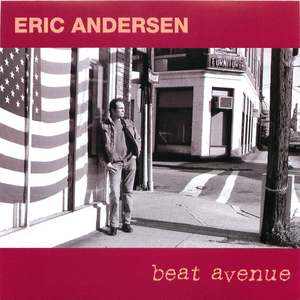
Beat Avenue
produced by Eric Andersen, 1943-; performed by Eric Andersen, 1943- (Appleseed, 2003), 1 hour 29 mins, 12 page(s)
Details
- Field of Interest
- American Music
- Content Type
- Music recording
- Duration
- 1 hour 29 mins
- Recording Engineer
- David Seitz
- Format
- Audio
- Sub Genre
- Folk-Rock
- Label
- Appleseed
- Page Count
- 12
- Performer
- Eric Andersen, 1943-
- Producer
- Eric Andersen, 1943-
- Date Recorded
- 2002-05
- Release Date
- 2003
- Review
- Beat Avenue is 60-year-old Eric Andersen's most ambitious album, a 90-minute tour de force that encapsulates his musical and lyrical concerns over a lifetime. The music is often-dense rock dominated by a rhythm section led by guitarist Eric Bazilian of the Hooters. Equally dense is Andersen's highly poetic versifying, which he sings in his gruff baritone. Andersen is world-weary in these songs, roaming the globe haunted by the past and fearful of the future. He confesses to a reckless youth, but acknowledges that he can no longer afford such license. "What once was Charles Bukowski," he sings in "Before Everything Changed," referring to the free-living beat poet, "is now Emily Dickinson." The ballads and love songs "Song of You and Me," "Shape of a Broken Heart," "Under the Shadows," and "Still Looking for You" are rendered tenderly, but they are also full of regret and loss, past-tense reflections that recount memories of love long gone. The first disc of Beat Avenue is complete and formidable unto itself, but there is a second CD consisting of two lengthy songs. The title track, running more than 26 minutes, is a beat poem with jazzy accompaniment by Robert Aaron in which Andersen recalls a poetry reading he attended as a 20-year-old on the day President Kennedy was assassinated. Beat writers such as Allen Ginsberg and Jack Kerouac come up in his reminiscence, along with friends and fellow musicians, as he conjures up the sound and feel of the early '60s in San Francisco and pinpoints a moment when history changed, revealing how it felt for one young observer. This isn't folk music of the type with which Andersen is generally associated, and it can be demanding of the listener, but it is also a compelling transformation of memory into art song. ~ William Ruhlmann, All Music Guide
- Subject
- American Music, Music & Performing Arts, American Studies, Rock Music, Rock Music, Música Rock
- Keywords and Translated Subjects
- Rock Music, Música Rock
